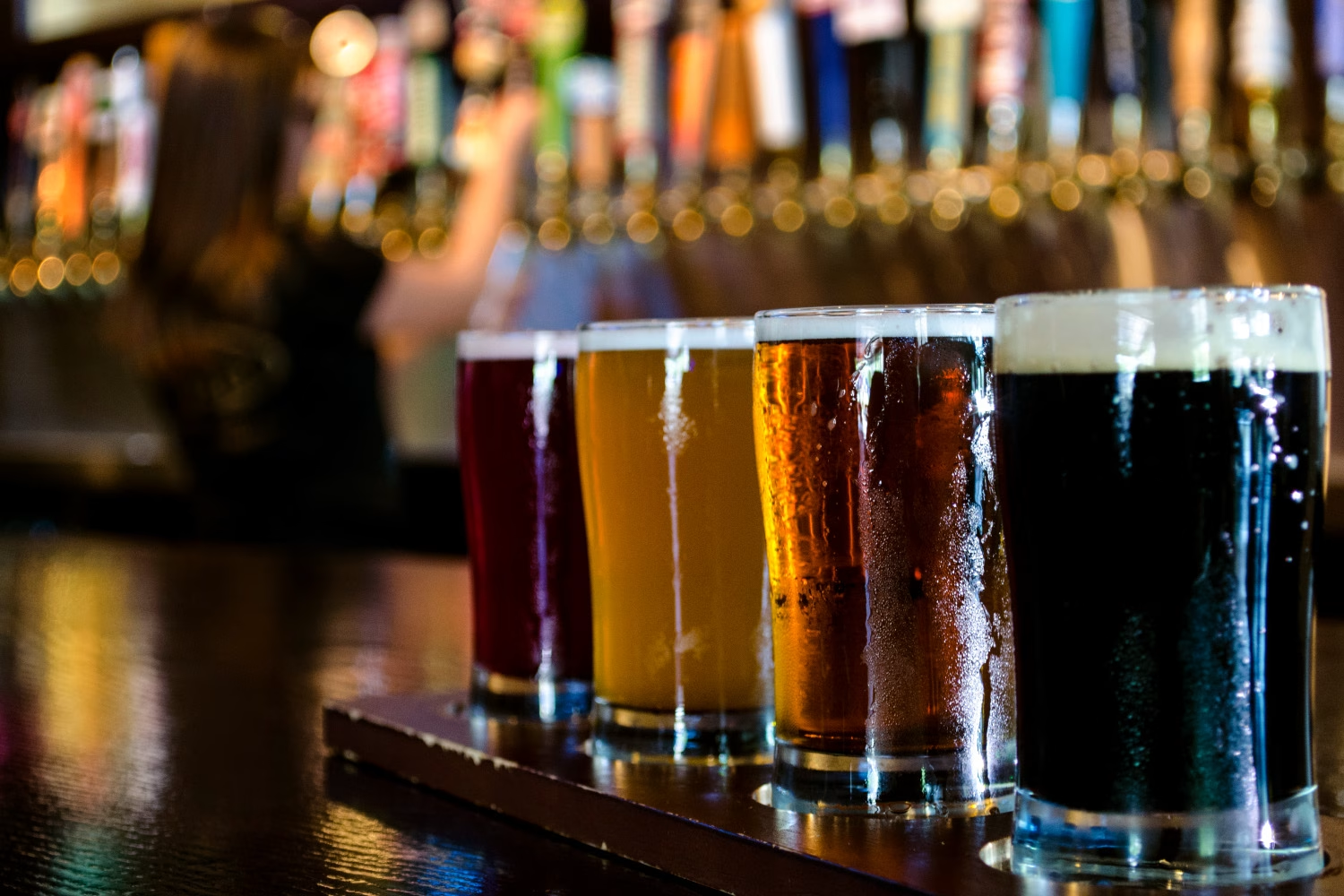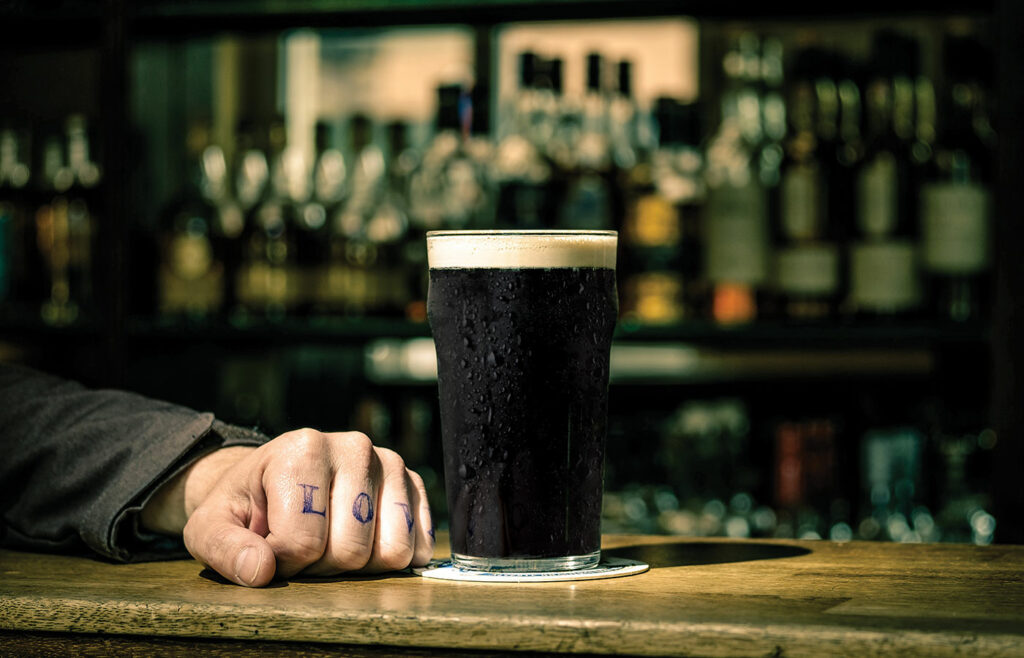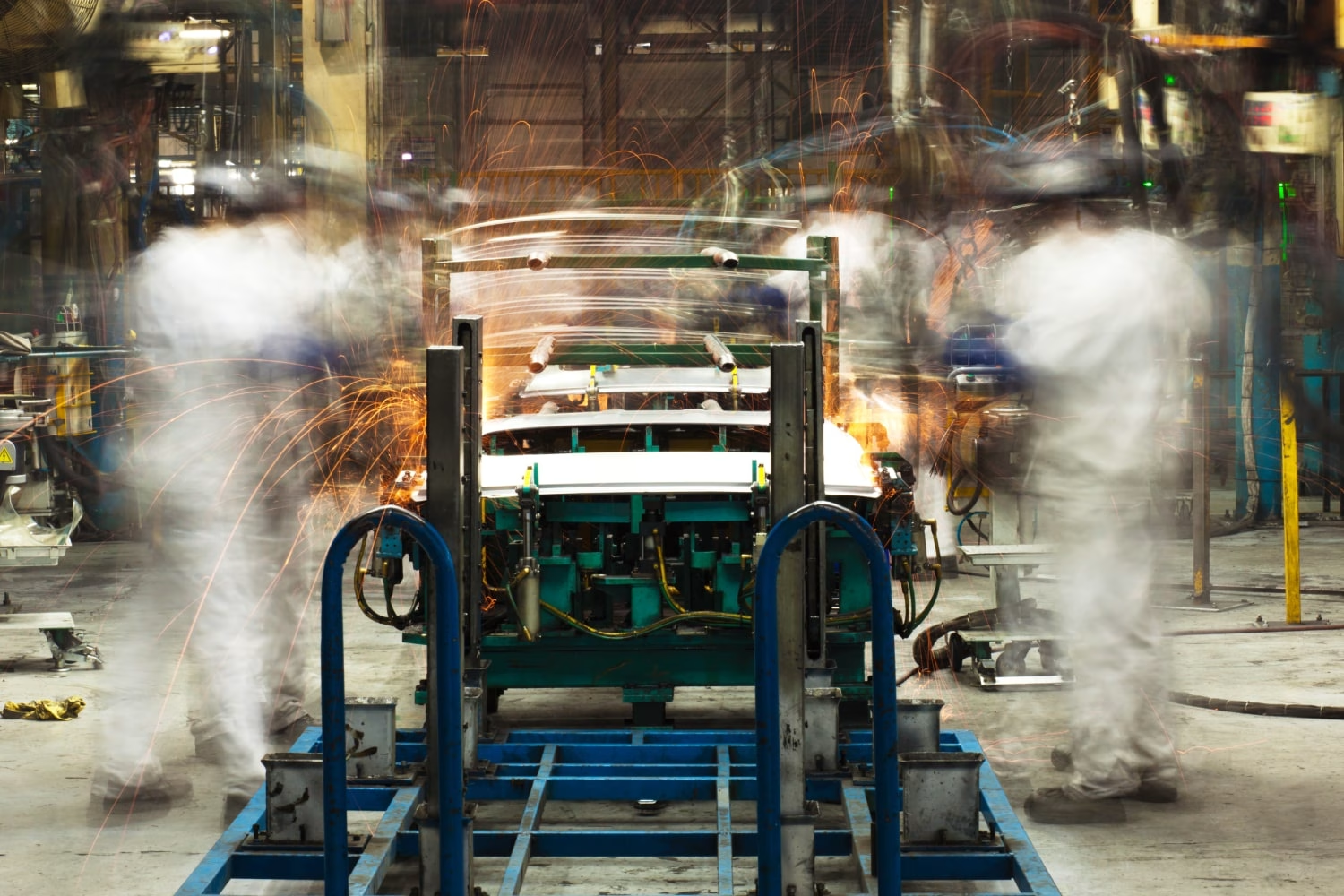Content Marketing Lessons From Craft Beer

Share this story
Craft breweries hop on the content marketing barstool with heady stories to tell.
Mention “marketing” and “beer” to the average beer drinker, and the first thing to come to mind is probably Super Bowl commercials. Clydesdales. Talking dogs and frogs. Maybe the occasional big-budget historical epic.
Small, independent craft brewers don’t have Super Bowl commercial cash. But then again, their most loyal customers aren’t average beer drinkers.
“The beer geeks, they get in pretty deep,” says Karen Hamilton, former director of communications for California-based brewer Lagunitas Brewing Co., a company that straddles the line between craft and corporate (more on that later). “They want to know ingredients. They want to know the ABV, the IBU, the style, the process — all of those things.”
ABV is alcohol by volume, in case you’re stumped by the acronym stew, and IBU is international bitterness units. Add them to the long list of in-the-know aspects of craft brewing, from hops schedules to barrel types, that appeal to a hardcore audience.
That audience — along with more casual drinkers who develop a taste for something that has more of an actual taste — represents a growing market, too.
The Brewers Association estimates the craft beer market was worth $22.2 billion as of 2020. That’s a market made up of 8.700-plus small to medium breweries, none of which are backed by Anheuser-Busch levels of money. Do they need it, though?
“The smart breweries, the ones we like to partner with, really embrace storytelling,” says Alan Moreno, co-founder of Plank Road Tap Room in Elgin, Illinois, with wife (and former Imagination project manager) Breanne Moreno. “They put themselves and their thoughts out there on Instagram. They even provide a peek into their personal lives once in a while.”
In other words, craft brewers are getting on board with what content marketing does well: authentic storytelling. That means behind-the-scenes information, rich with details. Sharing the personalities behind the products an audience knows and loves to sip.
“There’s an ‘I liked the band before it was popular’ factor at work,” Moreno says. The key, then, is to give the beer geeks something to like.
Beer geeks unite
In 2008, Michael Kiser started the Good Beer Hunting blog as a passion project. Beer was the first thing on his mind, not business. He had experience as a design strategist at an innovation agency working for Miller, and he sought to bring insider coverage of the industry.
More than a decade and countless pints later, beer is still on Kiser’s mind, but Good Beer Hunting is now a full-blown editorial operation. Its staff of around 55 — writers, designers, photographers and videographers — creates content that has earned awards from the Webbies and Saveur, among others.
The evolution was natural. In a world full of beer blogs, high production value, insider perspective and strong stories made it possible to build a known name. “We were surprised by the low-production nature of industry coverage,” Kiser says. “It became easy to stand out by crafting high-quality content using professional writers, photographers and designers.”

It helps that the staffers, just like Kiser, are among the beer-geek audience.
The site may have begun as a passion project, but in addition to being a respected editorial outlet, Good Beer Hunting has a consulting arm. Kiser and team provide branding strategy, design and other services to clients like small brewers and taprooms.
Successful brewers operate with goals similar to Good Beer Hunting’s. By sharing stories and content that show a like-minded audience just how much they “get it,” brewers and other businesses become thought leaders you’d want to share a beer with.
“They are fans, too,” Kiser notes. “Many were homebrewers. They never left behind that beer fandom and that desire for quality. And that becomes a communicable passion for their consumers.”
How craft brewers spread that passion is where things get interesting.
Call it storytelling for beer geeks, by beer geeks
For example, a typical story series from Maine mainstay Allagash Brewing Co. may feature an in-depth explanation of the intricacies of white beer — which happens to be a major staple for the company — followed by an extensive look at founder Rob Tod’s history with that variety of beer. These stories offer a peek behind the curtain and a level of context and detail that appeals to a hardcore audience.
This scenario plays out again and again across social accounts and blogs nationwide. Some breweries experiment with Snapchat or Instagram stories to offer insider info about new and special releases, typically from the point of view of the people making the beer, or playful photos that look like something straight out of a science experiment — hello, brettanomyces bruxellensis (yeast). The culture matters.
And it works for the people who sell and serve the beer, too.
Plank Road Tap Room put a twist on the behind-the-scenes concept by producing a video series called Shift Beers.” Moreno and a Plank Road cicerone — think sommelier for beer — would host brewery owners and brewmasters, who, in turn, would spill over their beverages of choice. “What do the people who serve you beer talk about when they finally get you to leave?” describes Moreno. “What’s it like to talk over that first beer after you mop the floors?”
It’s not about reviews. It’s definitely not about advertising. But when an influencer like Ryan Clooney, a well-respected brewmaster from Crystal Lake Brewing, showed up, the video earned 6,500-plus views — customers still sometimes mention it when they visit the taproom.
“It has been such good marketing for us, and we never even thought of it that way,” Moreno says.
“They never left behind that beer fandom and that desire for quality. And that becomes a communicable passion for their consumers.”
– MICHAEL KISER
Know your flavor
There’s a tendency in evolving content marketing strategy that will feel all too familiar to marketers: rushing to tactics while skipping over business objectives.
“I see this all the time, people not necessarily tying the content they’re producing back to the overriding brand strategy,” Kiser says. “Or they think their social strategy is it, but that’s false. Social strategy is a tool to serve brand strategy. You have to start with your goals.”
A production brewery — one focused on brewing but not direct consumer sales — may see the shiny, slick taproom Instagram photos that permeate the industry and decide to replicate that tactic. This fails because the audience for a production brewery cares about the details of the brewing process. A taproom out front is just window dressing.
Kiser — and, in fact, every person interviewed for this story — again points to Allagash as a brand that gets it right. “They put amazing detail around their product stories, their techniques and the brewing process,” he says. “They use beautiful photos, and it all connects to the mission of local agriculture and the Maine lifestyle that connect with their Maine brewery.”
Those two elements indeed stand out across Allagash’s content. Stories on the brewery’s blog cover everything from the sourcing of local ingredients, such as Maine wheat, to recipes for lobster mac and cheese to pair with your beer. In summer 2017, the Allagash team ate and drank their way across Maine in a picture-perfect social campaign. It’s easy to discern what the brand is all about.
Likewise, Chicago brewery Half Acre Beer Co. aims for an aesthetic that is natural and spontaneous to match the unfiltered, raw nature of its product, says Meredith Anderson, marketing manager. The taprooms are all about carved wood and natural light. The photography throughout the brand’s social accounts is full of plants and natural scenery, plus vivid colors that match the company’s packaging.
“We value the photo very highly,” Anderson says, “so we don’t ever want to post anything just to post it if the quality isn’t representative.”
This representative nature filters down to the individual beer level, too. Each beer has its own personality, and Anderson lets that personality dictate how its story will be told. For the brewery’s Deep Space Double IPA, for example, the team wanted something appropriately spacey.
“My favorite thing is when an idea just works out,” she says. “We did this time-lapse video where I dyed 75 ice cubes different colors and then had them melt over the beer bottle. It looked galactic — space and time — and when they melted, they revealed the space beer.”
The company has an in-house artist for labels and other work, too, and artistry is a key selling point for Half Acre.
For Lagunitas, the same goes for music, which is ingrained in the company culture. Founded in the California town that gave the brewery its name in the early 1990s, the brand has grown to other locations in California, plus Chicago and Seattle. Heineken bought half of the company in 2015 and the other half in 2017.
This makes Lagunitas a major craft beer success story, though many in the business don’t define success that way. Lagunitas technically is no longer a craft beer, both by industry definitions and by the reckoning of vociferous internet commenters.
“You’re talking about an audience that is staunchly into craft beers,” notes Moreno. “They’re offended when Sam Adams does national advertising. It’s a sign of the culture — like Metallica cutting their hair.”
For good or ill, perception has shifted for Lagunitas. The company’s response? Stay true to who it’s always been, says Hamilton. Her brother, founder Tony Magee, is a longtime musician and has always made music part of Lagunitas. The company puts on 15 or more concerts every summer at the LaguMiniAmphitheaterette at its home base, which is now in Petaluma, California.
These live events extend outward to a music player on the brand’s website. And to fun, interactive games such as trading pins from concerts, bands or other music-themed pins — by mail — as prompted on Instagram. The company also eschews tried-and-true mass marketing methods such as email in favor of both in-person events and one-on-one interactions. “We are untraditional,” Hamilton says. “We’ve always been. It’s brought us to the point we are now, so why would we change that?”
The mug is half full
Content marketing pros may recoil at the notion that a major Heineken-owned brand doesn’t do email. But it’s an important lesson in culture and identity. Sometimes mass communication tools and the measurements that go with them don’t suffice for tracking meaningful engagement among niche audiences. Even if Lagunitas is relatively big now, the company prefers to stay small, creative and highly personal in its communications.
For that matter, Kiser and the Good Beer Hunting team don’t really track analytics. “Analytics don’t measure how important or memorable a story was to the person who read it,” Kiser says. He’ll take the individual brewer who comes to him for his expertise after reading his stuff over an impressive click tally any day.
That’s not to say brewers and taprooms don’t track, adapt and evolve, though. Moreno started out publishing the Shift Beers series on YouTube, then heeded advice to try Facebook Live instead. Right away, the series saw 20 times the traffic and an increase in the number of comments and shares. The resulting numbers would look small to a big brand. But the enthusiasm the show generates is exactly what a small company needs. And it comes down to a philosophy that applies not only to Moreno’s business but to other brewers and businesses, too.
“We want to be damn near everything to a very small group of people,” Moreno says.
“You’re talking about an audience that is staunchly into craft beers. They’re offended when Sam Adams does national advertising. It’s a sign of the culture — like Metallica cutting their hair.”
— ALAN MORENO
Beer marketing strategy in action
The buzzworthy examples below come courtesy of craft breweries, but they’ll go down easy for other small brands looking to step up their content marketing game.

Don’t skip strategy
- Allagash (1) prioritizes local agriculture and Maine culture.
- Brooklyn Brewery (2) puts a heavy emphasis on artistry but not gimmickry.
- Goose Island (3) is all about perfecting the classics.
Most important, each brand’s messaging comes through loud and clear in their communications. “You have to start with your goals,” Kiser says. “The ones who use content well are tying it all back to the overriding brand strategy.”
Lead with personality
- Brooklyn Brewery brewmaster Garrett Oliver (4) is front and center in much of the brand’s content for a reason: He’s a beer philosopher, dapper dresser and renowned authority in the field. He helps define the entire aesthetic and approach of the brewery, but he also gives fans a point of connection. As Moreno puts it, “Following him on Instagram is like following the most interesting man in the world.” (Beer people tend to think in beer analogies.)
Know when to partner
- Half Acre’s Beer Hates Astronauts (5) brew comes from an organic partnership between its in-house artist and friend Ryan Browne, creator of the bizarre and beloved comic book series God Hates Astronauts. So Browne provided the art and aesthetic for the IPA, with a label that includes anthropomorphic superhero animals that are best viewed rather than described. “The beer itself is popular, so it’s hard to decipher what success is from the comic connection and what is just the beer tasting awesome,” former director of communications Meredith Anderson says. “But we certainly reach a different audience because of that connection.”
When in doubt, think simple
- For Half Acre, that often means showing beer in a rough or natural setting (6) in photographs to match the nature of the beer. Brewpubs, on the other hand, often skew their imagery toward pairings of food and beer. In any case, even a cursory glance at multiple brewers’ Instagram accounts reveals one thing: Beer in a glass works. The marketers may get tired of it, but it does the job. “We do a lot of creative things, but we have learned that people actually do want to see the basic beer-in-a-glass shot,” Anderson says. “It’s not a lack of creativity. It’s helpful — and it gets people excited.”



